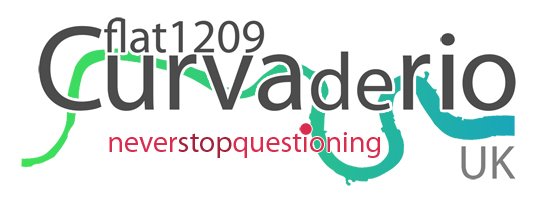Hi everybody,
I wanted to write a little,
and here is the english translation.
Today I tell you a story,
It’s about a bridge,
yes, a bridge.
You’ll say:
-‘what about a bridge? A bridge is made and that’s it!’
But it’s not like this.
Before there was not a bridge, and you could stay on one side or the other.
Then the bridge is made and people, animals, goods, culture and art start to pass over it, but also war, religions and epidemic diseases.
The fact is that a bridge looks motionless but the pressure of the water flowing under its arches generates hollow spaces where the pillars move damaging the structure of the bridge.
Another bridge It’s then build next to it, and once finished the former is dismantled.
This is how bridges move.
The bridge I want to tell you about was first built of wood, a floating bridge.
It stands to reason that there was a extreme need of connecting the two shores.
In fact nowadays a bridge still exist in that very point of the river I’m talking about.
The bridge has been improved whit piers during the years till being made of stone.
Considerable traffic and trade led the bridge to be widened and reinforced but eventually moved.
In the meanwhile other bridges rose nearby, some of them more beautiful but not more useful or important.
One of them was so beautiful and famous to convince a rich and powerful man from overseas in buying it, just like that, he wanted to buy the beautiful bridge, the symbol of the city divided by the river.
He didn’t think of it twice, he went to the owner (because bridges have a owner) and purchased the bridge with the intention of rebuild it in his country, making of it the biggest tourist attraction, remarking that with money anything is purchasable, even the symbol of a city, its people and their culture.
The citizen during weeks assisted to the patient job of the workers numbering each stone than placing them on the ship that will have brought them to destination.
The bridge was promptly replaced with a brand new one build few meters away and city life kept going on without loosing its identity.
The rich and powerful man, when the bridge was already rebuilt stone after stone on the man-made canal wanted by him in the middle of the desert (after crossing an ocean, the
The structure in front of him didn’t remind at all the bridge acquired by him with an extraordinary offer at the auction tree years before.
It’s time now of telling you that he signed the purchase of the famous ‘
You don’t believe it?
Don’t worry, I just told you a story.
Luca

I leave the Italian version just because it's better written.
é la storia di un ponte,
si, un ponte.
Voi direte:
- ‘che storia può avere un ponte? Un ponte viene fatto e basta!’
E invece no.
Un ponte prima non c’èra, e si stava o di qua o di là,
poi il ponte è fatto e si incomincia a passare, persone, animali, mezzi carichi di merci, cultura ed arte ma anche guerre, religioni ed epidemie.
Il fatto è che un ponte sembra immobile ma l’acqua che scorre sotto le arcate spinge e crea vuoti nei quali i piloni si spostano creando imperfezioni nell’assetto della struttura.
Viene quindi costruito un altro ponte poco più lontano ed una volta terminato si procede allo smantellamento del precedente.
E’ così che si muovono i ponti.
Il ponte di cui vi voglio parlare è stato inizialmente costruito in legno, un ponte galleggiante.
E’ evidente che c’èra necessità estrema di collegare le due sponde, tant’è vero che fino ai giorni nostri un ponte è sempre esistito in quel punto di quel fiume di cui vi racconto.
Il ponte è stato negli anni perfezionato con piloni fino ad essere costruito in pietra.
Il traffico e gli scambi commerciali erano notevoli ed è stato quindi ampliato e rinforzato ma poi spostato, nel frattempo altri ponti sono sorti nelle vicinanze qualcuno più bello ma non certo più utile o più importante.
Qualcuno era talmente bello e famoso che un ricco e potente signore d’oltreoceano si mise in testa di comprarlo, proprio così, voleva comprare il bel ponte simbolo ormai della città divisa dal fiume.
Non ci pensò due volte, andò dal proprietario (perché i ponti hanno un proprietario) e acquistò il ponte con lo scopo di ricostruirlo nel suo paese e farne la più grande attrazione turistica, marcando il fatto che con il denaro si potesse comprare tutto, anche il simbolo di una città, di un popolo, di una cultura.
Per settimane i cittadini guardarono stupefatti l’opera paziente degli operai che meticolosamente numeravano ogni pietra, disponendola poi sulla nave che l’avrebbe portata nel nuovo mondo.
Il ponte venne prontamente sostituito con uno nuovo un poco più distante e la vita della città continuò senza perdere la sua identità.
Il ricco e potente signore, quando il ponte era già stato ricostruito pietra dopo pietra sul fiume artificiale che fece scavare di proposito in mezzo al deserto (dopo aver attraversato un oceano, il canale di Panama e cinquecento chilometri di strada ferrata) si accorse di un errore.
La struttura di fronte a lui non ricordava affatto quella del ponte da lui acquistato con una strabiliante offerta all’asta di tre anni prima.
È tempo ora di dirvi che firmò l’acquisto del famoso ‘London bridge’ pensando di concludere un affare e portare in America ‘Tower bridge’, simbolo della città di Londra.
Non ci credete?
Tranquilli, vi ho solo raccontato una storia.
Luca.
Luca Fredianelli London Twenty Seventh November Two Thousand Eight

4 comments:
So, just you can understand it.
Let's everybody write in english, bloody people.
clever bloody comment.
L.
here is the bloody translation
Thanks, bloody italian guy.
(No offense at all)
Post a Comment